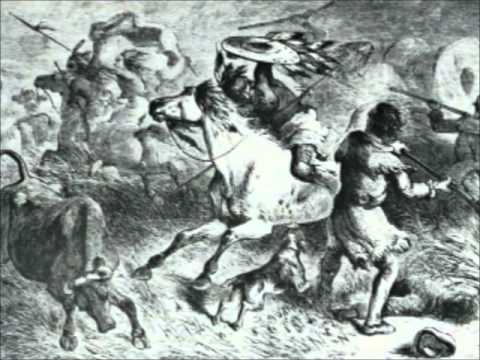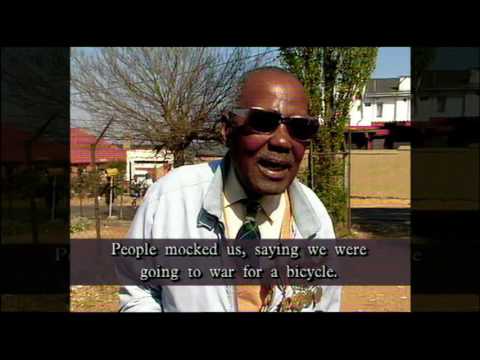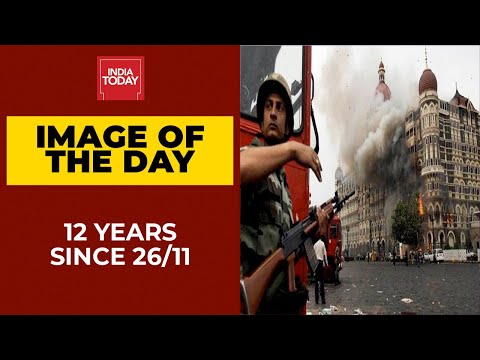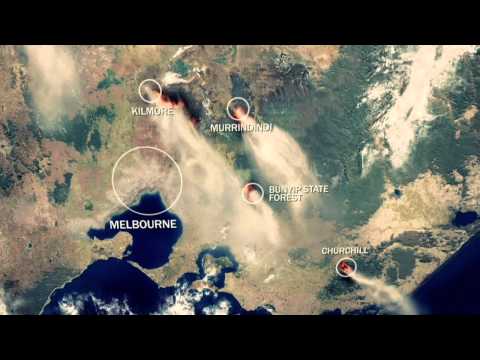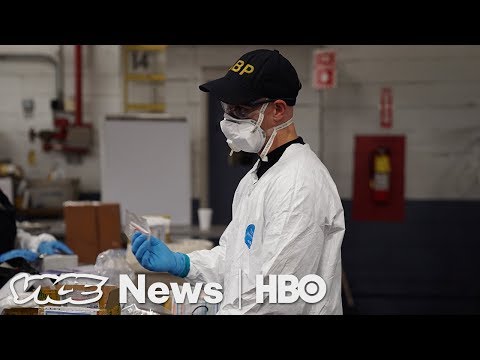In chronological order, here are ten catastrophes that, to varying degrees, were overshadowed by more prominent catastrophes. 10 NYC Horrors That Were As Traumatic As 9/11
10 Uncivil: The Sand Creek Massacre
Fortunately for America’s first inhabitants, during the Civil War US soldiers were largely too busy slaughtering each other to slaughter Indians. There were, however, exceptions, including a four-month fight with the Dakota people in 1862. The US lost more than 100 servicemen and 350 settlers before driving the tribe’s famously fearsome warriors back. The dust-up took a backseat to such momentous events as the Battle of Antietam—the bloodiest in American history—and the Emancipation Proclamation. An even lesser-known conflict was the 1864-65 Colorado War, in which Cheyenne, Arapaho and Lakota forces battled US soldiers and Colorado militiamen. The staggered, skirmish-centric confrontations were indecisive and unremarkable save for a lone event: one of the most disgraceful mass murders in US military history. On November 29, 1864, 675 men led by Colonel John Chivington crossed into Indian territory. The soldiers sacked the village of Black Kettle – over which flew both an American flag and a white flag of truce – and killed about 230 Indians, mostly unarmed women, children, and elderly. There were no enemy combatants whatsoever in the village. Unrepentant and unenlightened even for the mid-19th Century, Chivington declared “I have come to kill Indians, and believe it is right and honorable to use any means under God’s heaven to kill Indians… Kill and scalp all, big and little; nits make lice.” A military investigation found Chivington culpable, but not until he’d returned to civilian life. He defended what became known as the Sand Creek Massacre until his death in 1894.
9 The SS Mendi: 600 Dead in a Desensitized Nation
One of the UK’s deadliest nautical disasters was also one of its most underrecognized, for two main reasons. Shortly before daybreak on February 21, 1917, the SS Mendi, a British passenger steamship outfitted for troop transport during World War I, was accidentally rammed in dense fog by the Darro, a Royal Mail Steam Packet Company cargo ship three times the Mendi’s tonnage. The Darro survived; the Mandi did not, and more than 600 of her crew perished. The first reason the disaster went relatively unnoticed is its timing. Coming off a year, 1916, that included the Battle of the Somme – the bloodiest battle in world history, and one in which the British suffered 125,000 dead and 420,000 total casualties – the UK was well on its way to amassing an ungodly 750,000 WWI combat deaths. Amid the most hellish war in its history, 600 men dying in a seafaring accident didn’t make too many waves. The other factor was the Mendi’s occupants, the majority of whom were black African soldiers. And while many died in the collision or were trapped below deck as the Mendi quickly sank, many of the deaths may have been avoidable had the soldiers been more familiar with the ocean. Most had never seen the sea before this voyage, and very few could swim. So despite the Mendi’s escort, a steamer called the Brisk, swiftly scooping up some survivors, many drowned just seconds after entering the water.
8 A Deadly Secret
On July 16, 1945, the heavy cruiser USS Indianapolis set sail from San Francisco on a top-secret mission. Traveling at record-breaking speed, she reached Pearl Harbor, Hawaii in just over three days, then continued to the US occupied island of Tinian. Arriving on July 26, the Indianapolis delivered its package: enriched uranium for the nuclear bomb dropped on Hiroshima, Japan just 11 days later. The Indianapolis then visited Guam, before departing for Okinawa with 1,195 sailors – manpower for the bloody invasion of mainland Japan everyone thought was coming. Only of course it wasn’t – and the Indianapolis became a sort of deadly, naïve decoy. At 12:15am on July 30, two Japanese torpedoes landed direct hits. Twelve minutes later the ship rolled completely over, taking some 300 sailors down with it. The other 900 were adrift at sea. Incredibly, no one seemed to notice. It took three and a half days for Navy command to learn of the ship’s sinking – and that was only when a smattering of survivors were spotted in the open ocean. By that time, only 316 men were left alive. The rest had met their ends in a variety of horrific ways, including drowning, hypothermia, shark attacks and even delirium-caused suicide and murder. Overshadowed by the atomic bomb dropped just four days after the survivors were rescued, the ordeal was detailed years later in a captivating documentary.
7 An Assassin Changes a Nation’s Narrative
In early 1968, a trifecta of events may have shifted the trajectory of the United States’ continued involvement in the Vietnam War. In late January, North Vietnamese troops attacked US installations and South Vietnamese cities, taking territory and lives. What became known as the Tet Offensive sparked Walter Cronkite, the USA’s most respected broadcast journalist, to declare the conflict an unwinnable stalemate in late February. March 31 brought another Vietnam bombshell: President Lyndon Johnson declared that he would not seek reelection. Considering he’d been among the most effective domestic policy presidents in the nation’s history, the sole reason for his decision was the bloody, misguided quagmire in Southeast Asia. In three consecutive months, Americans were given three major hints that Vietnam was a waste of troops and treasure. Then, four days after Johnson announced his pending retirement, Martin Luther King Jr. was assassinated in Memphis, Tennessee. The country exploded. Riots, protests, vigils, prayer services. The most influential black civil rights leader in the nation’s history had been cut down by a white gunman. A sort of double-tragedy, King’s murder interrupted a much-needed reckoning with the failed Vietnam War, instead laser-focusing the country and the world on America’s longstanding racial discrimination and hate-fueled violence.
6 The Juice vs. The Genocide
Nothing exemplifies Americans’ warped priorities like their reactions to two simultaneous tragedies. One was a genocide in which 800,000 innocent people were butchered in Africa. The other was a double murder in which a celebrity allegedly butchered his ex-wife and her acquaintance. Guess which one we were tuned into? On June 12, 1994, Nicole Brown-Simpson, ex-wife of superstar athlete and not-so-superstar actor OJ Simpson, was stabbed to death – in fact, she was nearly decapitated – along with her friend, Ronald Goldman. Five days later, all of America and much of the world was watching a live feed of Simpson, gun to his head in a white SUV, pursued by police down a Los Angeles highway. By that time, in Rwanda, the majority Hutus were two months into a 100-day purge of the minority Tutsi population. The uprising was launched by coordinated radio announcements in early April, with lists of government opponents given to militias tasked with murdering them and their families. Soon, the slaughter spread to the general Tutsi population. Neighbors killed neighbors and, for fear of being killed themselves, some Hutus even murdered their Tutsi spouses. The weapon of choice for most Hutu militants, the machete, became the macabre spectacle’s symbol. The international community did shamefully little to stop the ethnic cleansing. Just a year removed from the disastrous Blackhawk Down episode in Somalia, the US was disinterested in another African conflict. Meanwhile, toothless UN peacekeepers pulled out after 10 Belgian soldiers were killed.
5 NYC’s Deadliest Plane Crash of 2001 was… in November?
Two months and one day after the September 11 attacks, a tragedy occurred that easily would have been America’s worst disaster in years: the second deadliest airplane crash in US history. At 9:14am on November 12, 2001, American Airlines Flight 587 departed New York City’s John F. Kennedy airport, bound for the Dominican Republic. Just two minutes later, the Airbus A300 slammed into the heavily populated neighborhood of Belle Harbor, Queens. The crash killed 251 passengers, nine crew members and five people on the ground. Understandably, everyone’s first and worst fear was that a bomb or suicide nosedive had caused the disaster. After all, how often does a multi-engine commercial airliner crash in a developed country – let alone in a city that was the prime target of an historic terrorist attack just two months prior? Fortunately for New Yorkers’ frayed nerves, terrorism was quickly ruled out. The National Transportation Safety Board blamed the pilot’s overuse of rudder controls in response to wake turbulence – air disturbance from a preceding flight. The aggressive rudder use stressed the vertical stabilizer until it snapped off, dooming the aircraft. Flight 587 went into a flat spin, with the resulting aerodynamic load ripping off both engines. The last recorded words were First Officer Sten Molin screaming, “What the hell are we into? We’re stuck in it.”
4 Hurricane Who?
In 2005, the Atlantic saw its first and fourth most intensive hurricanes ever… and each took a backseat to a weaker yet deadlier storm. In mid-September, three million people fled the Houston, Texas area in one of the largest evacuations in American history. They were avoiding Hurricane Rita, a Category 5 storm whose gigantic swath would eventually affect several Caribbean countries and every Gulf of Mexico state. As many as 125 people died, and $19 billion in damage was inflicted. A month later, the most powerful Atlantic Hurricane on record directly impacted South Florida, ripping palm trees from roots and traffic lights from moorings. And this was AFTER it calmed down from a Category 5 to a Category 3. All totaled, Hurricane Wilma killed more than 30 and equaled Rita’s $19 billion price tag. But in 2005, both were a drop in the bucket. In late August, Hurricane Katrina would score a direct hit on New Orleans, breaching the levees of a city largely below sea level. Katrina’s fatality toll of 1,836 makes it the fourth deadliest hurricane in history, but it was the images of a flooded city with desperate, predominantly black citizens that captivated the world’s attention. Women with babies waving towels from rooftops. Days-old bodies floating in floodwater. Hungry, thirsty survivors stranded in an arena. Katrina was a pathetic poster child for America’s perceived incompetence and inherent racism.
3 26/11?
“9/11” is instantly recognizable as the date of the deadliest terrorism attack in US history, while “7/7” rings familiar as the day in 2005 when terrorists bombed three Underground trains and one bus in London. A less famous tragedy – outside of India, anyway – was more protracted than 9/11 and more prolific and lethal than the UK attacks. For four days starting November 26, 2008, 10 members of the Pakistan-based extremist group Lashkar-e-Taiba carried out 12 coordinated shooting and bombing attacks across Mumbai. While the Western world certainly noticed and condemned the massacre, the tragedy was overshadowed by the spiraling global financial crisis. In the US alone, nearly 250,000 jobs were lost in October; November’s numbers, released shortly after the Mumbai attacks, would be more than twice that as markets tanked and employers panicked. In late 2008, the West was looking inward, not outward. But what an attack it was. Mumbai was basically the 2015 Paris attacks without Paris: terrorists armed with automatic weapons and grenades targeted civilians at cafes, railway stations and even hospitals. The ordeal included hostage-taking at a Jewish center and two luxury hotels, including the famous Taj Mahal Palace & Tower. In all, 174 people were killed in a tragedy known throughout India as 26/11.
2 Australia Burns as the World Melts Down
The 2008-09 Financial Crisis was so protracted and permeating that it distracted from other tragedies as well. By January 2009, monthly job losses in the United States were peaking at a staggering rate of 800,000 – a pace nearly matched in February and March. Russia also shed 800,000 jobs in December, doubling the United States’ per capita rate. Canada lost 129,000 jobs in January – its most ever – while Spain’s unemployment rate of 14.4% exemplified Europe’s spiral. Amid the worldwide economic collapse, Australia suffered its deadliest wildfire ever – an event most people have never heard of. In early February, a series of fires began igniting across Victoria, Australia’s second most populated state. The blazes, many of which would merge into larger conflagrations, occurred during peak bushfire season, and in the wake of a brutal heatwave; Melbourne, Victoria’s capital, saw three consecutive days of temperatures exceeding 109° F (43° C), including a record-setting 113° F. On Saturday, February 7, as many as 400 individual fires were recorded, earning the day its Black Saturday moniker. Over the following five weeks more than a million acres were singed. Fueled by high winds, the fast-spreading fires progressed too rapidly for many would-be evacuees. People burned in their homes, in their vehicles, on the street after abandoning cars on fire-blocked roads. In all, 173 people died and more than 400 were injured.
1 The Other Mass Killer from China
COVID-19 isn’t the only deadly scourge whose origin is traceable to China. Another is the marked rise in deaths attributed to arguably the most dangerous illicit drug in the world: fentanyl, a synthetic opioid pain reliever 50-100 times more potent than morphine and heroin. Watch this video on YouTube While common prescription opioids like Vicodin, Percocet and OxyContin birthed the current overdose epidemic, fentanyl has played an outsized role in sustaining it. In the 12 months ending in May 2020, more than 81,000 Americans died of drug overdoses – a one-year record. Per the US Centers for Disease Control, synthetic opioids – “primarily illicitly manufactured fentanyl” – are the primary driver of increasing overdose deaths, with fatalities involving such substances jumping 38.4 percent from the previous 12-month period. Fentanyl also has been linked to increased deaths in the UK, Europe and Canada. Overdose deaths involving cocaine increased by 26.5 percent, an uptick the CDC also links to co-use or contamination of cocaine with fentanyl or heroin. This is because cutting an expensive product like cocaine with comparably inexpensive fentanyl allows a drug dealer to get more baggies per brick without sacrificing potency. Why fentanyl? Because it’s cheap, potent and versatile. Synthetic and cost-effective, most fentanyl is manufactured in large batches in China and shipped around the world via the black market. 10 Chilling Voices From 9/11 Read More: Twitter Website
